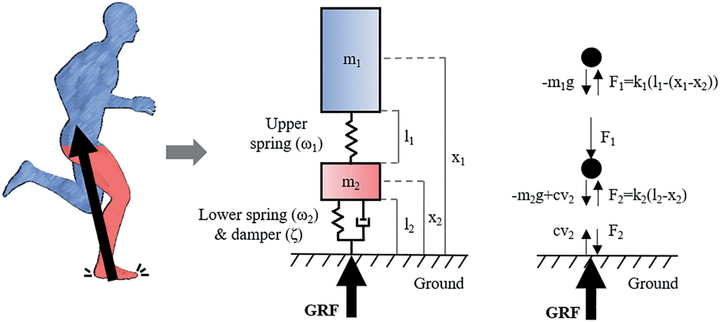Biomechanical loading during running: can a two mass-spring-damper model be used to evaluate ground reaction forces for high-intensity tasks?

Abstract
Running impact forces expose the body to biomechanical loads leading to beneficial adaptations, but also risk of injury. Highintensity running tasks, especially, are deemed highly demanding for the musculoskeletal system, but loads experienced during these actions are not well understood. To eventually predict GRF and understand the biomechanical loads experienced during such activities in greater detail, this study aimed to (1) examine the feasibility of using a simple two mass-spring-damper model, based on eight model parameters, to reproduce ground reaction forces (GRFs) for high-intensity running tasks and (2) verify whether the required model parameters were physically meaningful. This model was used to reproduce GRFs for rapid accelerations and decelerations, constant speed running and maximal sprints. GRF profiles and impulses could be reproduced with low to very low errors across tasks, but subtler loading characteristics (impact peaks, loading rate) were modelled less accurately. Moreover, required model parameters varied strongly between trials and had minimal physical meaning. These results show that although a two mass-spring-damper model can be used to reproduce overall GRFs for high-intensity running tasks, the application of this simple model for predicting GRFs in the field and/or understanding the biomechanical demands of training in greater detail is likely limited.